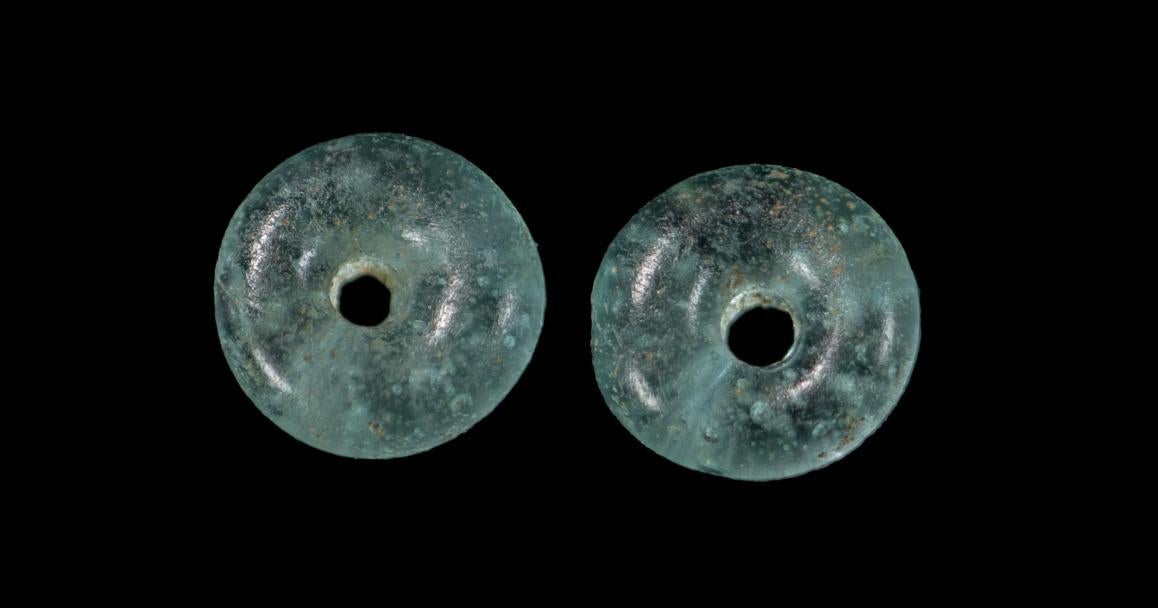Construction for an electricity project in the United Kingdom has led to several important archeological findings since 2020 that shed light on chapters of ancient history and the people who lived during them.
One especially interesting discovery was recently made in Lincolnshire, in eastern England, where archaeologists uncovered a grave dating back at least 1,400 years.
The Anglo-Saxon burial site included the remains of more than 20 people, along with a range of tools, jewelry and pottery, the British archaeological organization Wessex Archaeology announced this week.
Anglo-Saxon communities during the early Middle Ages existed across most of what is now England. This particular burial site was formed during the 6th and 7th centuries A.D., the organization said, citing experts.
Among the remains discovered were those of a teenage girl and a child, found lying on their sides with the child tucked behind the teenager, according to Wessex Archaeology. The older girl was buried with two gold pendants and a silver pendant around her head or chest, along with two turquoise glass beads and a ring-shaped brooch. Some of the discoveries were featured this week in a segment on the BBC series “Digging for Britain.”
© Wessex Archaeology
“Although many Anglo-Saxon cemeteries are known in Lincolnshire, most were excavated decades ago when the focus was on the grave goods, not the people buried there,” Jacqueline McKinley, the principal osteoarcheologist at Wessex Archaeology, said in a statement. Osteoarcheology is the study of archaeological human remains.
“Excitingly, here we can employ various scientific advancements, including isotopic and DNA analyses,” McKinley said. “This will give us a far better understanding of the population, from their mobility to their genetic background and even their diet.”
Special forensic analyses will be conducted to determine the relationship, if any, between the teenage girl and the child. Wessex Archaeology said that research will additionally “help to identify familial relationships and broader genetic links both within this community and between others in the region, and the movement of people in wider society.” Experts will also study the layout of the ancient cemetery and the artifacts found within it to learn more about the culture of the community and its economy.
“As this research unfolds, we hope to greatly extend our understanding of Anglo-Saxon life and death in the region,” Wessex Archaeology said.
Wessex Archaeology
The cemetery was initially uncovered by workers digging along part of the construction route for Viking Link, a massive energy project that aims to create a cable line between England and Denmark so the two countries can share electricity. The underground line will mainly run through the North Sea, but portions of it will extend onto land to connect to converter stations. In the U.K., the line will end at a converter station in Lincolnshire.
Fifty archaeological sites have been discovered along the land-based cable route since 2020. Some notable finds include a wheelbarrow dating back to the Bronze Age and a Romano-British farmstead. Wessex Archaeology deemed the cemetery remains “the most striking discovery” of all.
Peter Bryant, who led the project for Viking Link, said unearthing so many historical sites and artifacts on the cable route was unexpected.
“It was surprising how many artefacts we found across the route,” Bryant said in a statement. “It has been very interesting and exciting to help unearth the hidden treasures that have lain dormant for hundreds of years, in such a careful way. It was a pleasure working with Wessex Archaeology on this journey through time.”




